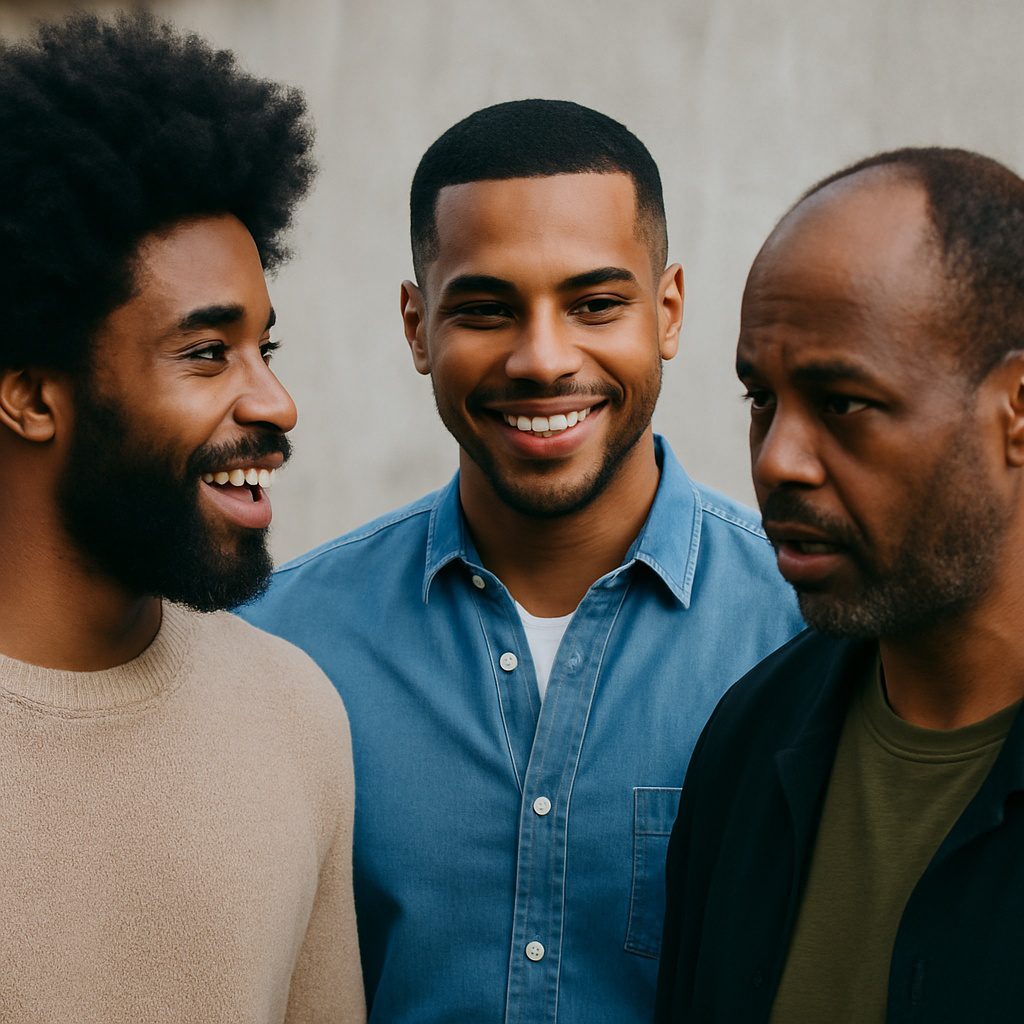The Truth About Hair Transplants for Black Men: A Powerful New Chapter in Hair Restoration
Why It Matters
Let’s be real for a second: hair loss hits hard no matter who you are, but for many Black men, the decision to get a hair transplant for Black men isn’t just about aesthetics—it’s about identity, confidence, and walking into the room feeling like your full self. And yet, the conversation around hair transplants for Black men has been strangely quiet for years. It’s time to change that. This is your no-BS, science-backed, fully informed look at what a hair transplant for Black men really means—and why it might just be one of the best decisions you’ll ever make.
What Makes Black Hair Different
So, why is this a different ball game compared to the usual hair transplant cases? It starts with hair type. Black men typically have tightly coiled or kinky hair, and that’s not just a visual difference—it affects everything from extraction techniques to how grafts are implanted. Unlike straighter hair types, Afro-textured hair grows in curved follicles under the skin, which can increase the risk of damaging follicles during extraction if the surgeon isn’t experienced. This is why finding a doctor who’s trained and seasoned in working with Black hair is absolutely non-negotiable for hair transplants for Black men.

FUE vs. FUT: Technique Matters
The most popular method today is Follicular Unit Extraction, or FUE. It involves removing individual hair follicles, usually from the back of your head, and transplanting them where you need growth. But here’s the twist: for African American hair transplant cases, surgeons often have to use special punch tools and techniques to preserve the curl pattern beneath the surface. When it’s done right, the results look natural and full. When it’s not? Let’s just say that’s why you don’t go to a Groupon clinic for something this personal.
The Risk of Scarring
But what about scarring? This is a real concern. Black skin is more prone to keloid scarring, which is why FUE hair transplants for Black men are usually preferred over FUT (which involves cutting a strip of scalp and leaves a linear scar). Still, even with FUE, there’s a risk if you don’t give your scalp time to heal or if the clinic rushes the process. Post-op care matters—a lot. Think of it as training for a marathon: if you slack on your aftercare, you’re not getting across that finish line the way you want.
What Kind of Results You Can Expect
Now, let’s talk about results. What does a hair transplant for Black men actually deliver? For most, it’s a game-changer. According to dermatologic literature, the average survival rate for FUE grafts in Black men is just as strong—often around 90%—when performed correctly. But here’s the kicker: because of the natural density and coverage that coiled hair offers, Black men often need fewer grafts to get the same level of fullness. That’s right—your natural curl pattern can actually work in your favor.
The Ugly Duckling Stage
Still, let’s not sugarcoat it. The road to that new hairline isn’t instant. You’re going to hit what’s famously known as the ugly duckling stage. Around weeks two to four, the new hairs fall out, and for a hot minute, you might wonder if you made the worst decision ever. But breathe—it’s normal. This shedding stage is just your follicles getting cozy in their new home. By month three or four, new growth starts to peek through, and by month nine, you’re seeing the real you again. And it feels good.
Pop Culture and Confidence
If you’re wondering whether anyone else has gone through it, just check the mirror of pop culture. LeBron James has been in the spotlight for years with whispers about his ever-evolving hairline. While he’s never confirmed a transplant, the before-and-after images speak volumes. The stigma is fading fast. Black men—from everyday folks to A-listers—are reclaiming their hairlines and not feeling the need to explain it to anyone. Hair transplants for Black men are now part of the modern self-care playbook.
Picking the Right Clinic
Of course, where you get your hair transplant for Black men matters almost as much as who does it. While the U.S. has some reputable clinics, Turkey has become a mecca for affordable, high-quality transplants. But proceed with caution. Not every international clinic is created equal. Look for a facility that understands ethnic hair characteristics and offers real patient results—not just stock photos. And definitely avoid places that promise miracles for suspiciously low prices. Your scalp deserves better, especially when it comes to hair transplants for Black men.
Peptides: A Non-Surgical Option
One area of emerging promise for Black men with early-stage thinning is the use of peptides. These small protein fragments are showing up in shampoos and serums and have been linked to stimulating hair follicle activity. If you’re not quite ready for surgery, they might be worth a look. You can explore the science of it more in our article on peptides for hair growth.
DHT: The Science of Hair Loss
There’s also the DHT angle. Dihydrotestosterone is the hormone that’s been villainized for causing hair loss in men. It shrinks hair follicles and shortens the growth phase. For Black men dealing with early recession, targeting DHT with shampoos or oral blockers can be part of the strategy. We cover that in detail in our guide on DHT and hair loss, which dives into the best science-backed approaches for hair transplants for Black men.
The Price Tag
Let’s touch on cost for a second. Hair transplants for Black men aren’t cheap, and they shouldn’t be. In North America, you’re looking at anywhere from $5,000 to $15,000 depending on the clinic, method, and number of grafts. Overseas options like Turkey can drop that to $2,000–$4,000—but you get what you pay for. If a place can’t show you successful outcomes for Black hair types, move on. This is one area where you want experience over discounts.

Recovery: What to Expect
Recovery time is another big question. You’re not going to be club-ready by the weekend. Most people take about 7–10 days before the redness fades and scabs fall off. You’ll also want to sleep with your head elevated, avoid sweating, and ditch the hat for a bit. By week three, you’re in that awkward phase—no cap. But by month six? You’re well on your way to wow, especially if you followed proper aftercare for your hair transplant for Black men.
Scientific Backing
Science is on your side, too. According to a 2023 review in the Journal of Clinical and Aesthetic Dermatology, the unique curvature of Black hair allows for more visual coverage with fewer grafts. That means the payoff can be higher if the transplant is done right. You can find detailed research on this in studies archived on NCBI, which break down the anatomical differences and surgical implications.
Making the Choice
Still wondering if this is right for you? The answer starts with what you see in the mirror—and how you feel about it. If hair loss is making you feel less like yourself, there’s no shame in seeking a solution. In fact, there’s power in it. Hair transplants for Black men aren’t about vanity. They’re about choice. About taking ownership of how you want to show up in the world.
Conclusion
So, what should you take away from all this? Hair transplants for Black men are not only possible—they’re successful when done right. You deserve a doctor who understands the full story of your hair, not just the medical chart. And most importantly, you deserve to feel good about your decision every step of the way.
The days of hair transplants for Black men being seen as a hush-hush topic are over. The conversation is out in the open now. And for Black men ready to reclaim their crown, there’s no better time to act.










